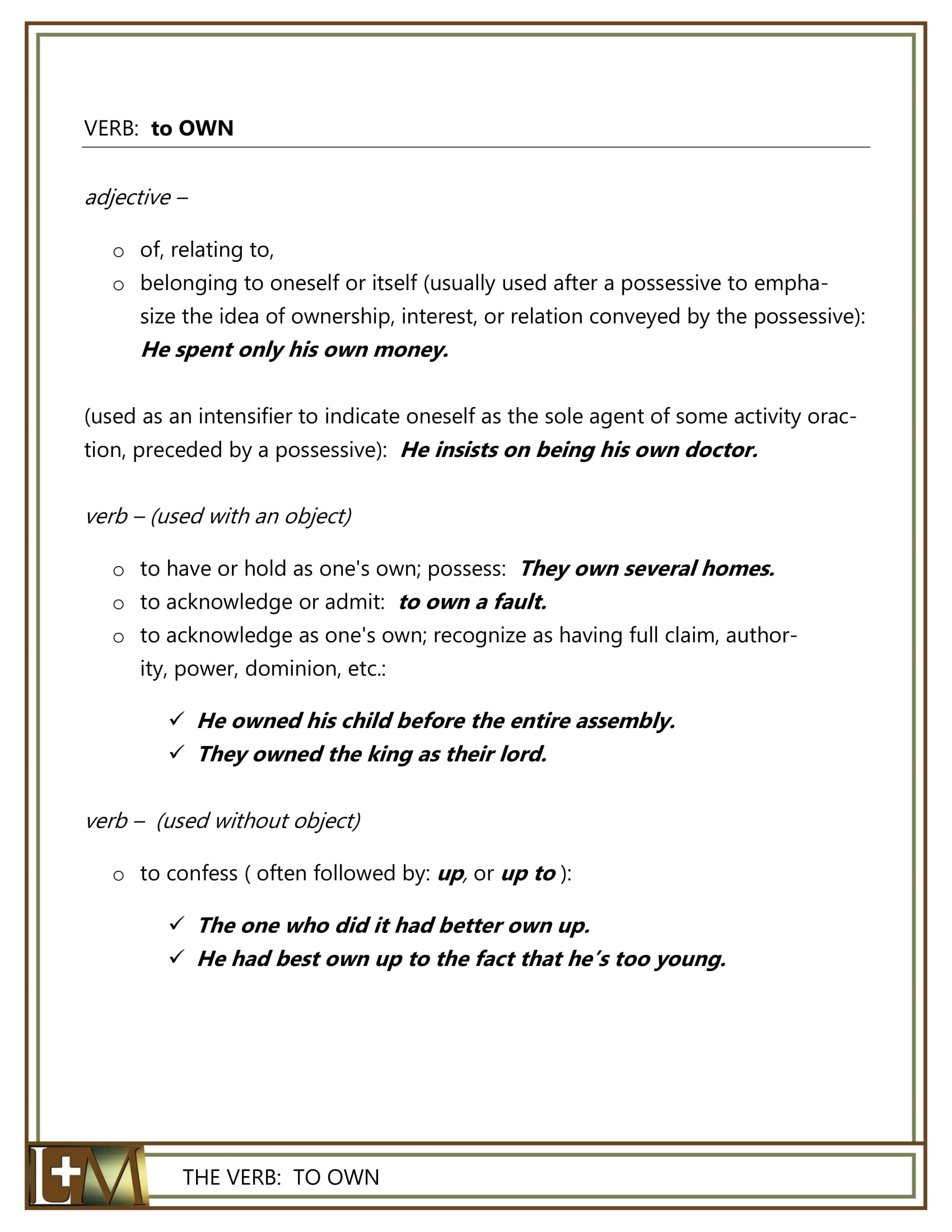
NOUNS
If there were but one category of language, I imagine it would be Nouns. Consider primordial language and consider what utterances would convey the most information, and I think it would be Nouns. Certainly verbs would be second, and one could argue that the two, more than likely, came about through the same means at the same time. If you think about it, a verb is really a noun.
Simple enough, the word noun in Latin means “name”, and that’s just it; we name things in order to identify them and use them. Nouns exist as subjects and objects – things doing or receiving – and they are characterized as being adorned with articles and adjectives; articles being the words a, an, and the, while adjectives are an extremely voluminous category of words that modify or describe those subjects and objects of our fascination. Prepositions come along to give nouns their placement in the world.
We often see a noun in a phrase that supports or modifies the noun. We call such Noun Phrases. “The beautiful girl walked across the street.” Here we have the noun phrase “The beautiful girl”. It is comprised of an article, and adjective, and a noun, which in this case, could be referred to as the ‘head’ noun. Notice the other noun phrase, “the street”.
Pronouns are nouns also. That makes sense; yes?
In the English language, nouns essentially have no gender. They are not masculine or feminine unless they are specific to on of the two genders; as in, “The boy went to the deli to get a sandwich.” While the “deli” and the “sandwich” have no gender, the word “boy” identifies a human of the masculine gender.
The English language has managed to classify nouns into various categories:
Proper Nouns are those nouns that identify a unique object, such as a specific person by name, a country like Mexico, and a river like the Danube.
Common Nouns identify general categories of objects; nation, river, road, and pasta.
Countable Nouns are those nouns (ha! notice the plurality) that have a clear, singular and plural identity through the addition of or modification and addition of the letter “s” (or a variant) at the end of the noun word. So, “noun” becomes “nouns”, “fox” becomes “foxes”, and “elf” becomes “elves.
Uncountable Nouns are those nouns that do not take on a plurality through amendment of its letters, but rather they lie in somewhat of an ambiguous realm where they are not quite singular or plural; they just are. Coffee, beer, corn, air, gas, advice, applaud, bacon, cotton, dust, and furniture. There are structures and intent in the English language that can pluralize such words, but the cases are limited.
Collective Nouns are similar to the Uncountable Nouns. Here we have words like government, organization, crowd, stack, staff, orchestra, and panel. Get the idea here? The reference is to an unknown, but greater than one, composition of persons, things, etc.
Concrete Nouns are those objects we universally can identify specifically; like flower or penguin, while Abstract Nouns are those that defy agreement; like art or serenity.
Inalienable Nouns are those that are anchored eternally to a specific situation or ownership. “Father” is one such, as well as “sweat”, “leg”, or “voice”. In opposition, Alienable Nouns are those that cannot be possessed indefinitely, nor derives from a unique source. “Ketchup” comes to mind (only if you are acquainted with the Asian version.).
Once fully populated, there should be a lot to download. A lot of the exercises will have to do with the proficiency level of the student, so look at their respective pages. For now, I’ll have a Beginner, an Intermediate, and Category pages.
The exercises are located for download from SUBJECTS Noun Menu. Link to the menu at the top of the page.
Thanks to Wikipedia for all of the good information.
